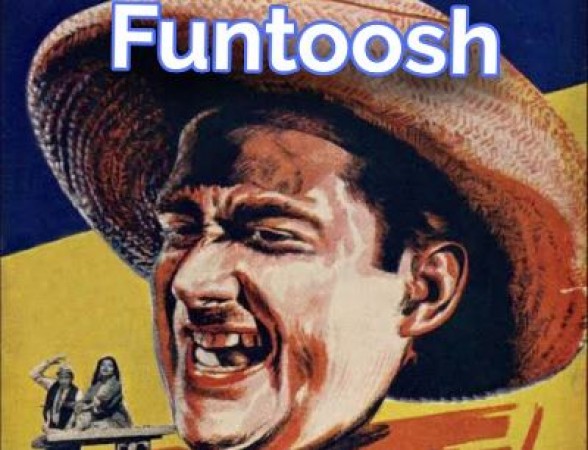
Bollywood has always been renowned for its vibrant and varied filmography, which draws inspiration from many different genres of film, including international cinema. Film "Funtoosh" (1956), which was influenced by the American classic "Meet John Doe" (1941), is an example of a Bollywood adaptation that was creative and innovative. While "Meet John Doe" is a well-known Hollywood film, "Funtoosh" is a favourite among fans of Indian cinema. We will go into detail about how "Funtoosh" was influenced by "Meet John Doe" and how it modified the idea to fit the Indian setting in this article.
It is crucial to comprehend the original text, "Meet John Doe," before looking at the Indian adaptation. "Meet John Doe" is a classic American drama that was directed by the legendary director Frank Capra and centres on the dejected newspaper columnist Ann Mitchell (Barbara Stanwyck), who composes a fictitious letter from a fictional character named "John Doe." As a protest against societal problems, John Doe threatens to kill himself in the letter on Christmas Eve.
Following a national sensation caused by the letter's publication, the newspaper decides to employ a homeless man named John Willoughby (Gary Cooper) to assume the identity of the made-up character. Although initially hesitant, John Willoughby accepts the position and develops into a representative of hope and change for the populace, ultimately inspiring a movement that aims to address social issues.
The Bollywood classic "Funtoosh," directed by Chetan Anand, adapted the main theme of "Meet John Doe" and gave it the inimitable Indian flair. The film's lead character, Prakash, played by the illustrious Dev Anand, emerges as a beacon of hope in a society plagued by inequality and corruption.
Prakash, a struggling writer in "Funtoosh," experiences disillusionment with his surroundings. Under the alias "John," he pretends to write a letter to a prominent newspaper in which he declares his dissatisfaction with the current system and his intention to end his life. The letter sparks widespread interest and grabs the public's attention, much like its American counterpart.
Meena, a young and aspiring journalist (Sheela Ramani), finds Prakash's letter and is determined to track down the author. Prakash is found, and she persuades him to take on the role of "John" in order to keep the movement moving forward. This creates the conditions for Prakash to develop into a universally recognised image of hope.
Similar to "Meet John Doe," "Funtoosh" examines issues like social change, the influence of the media, and how an individual's deeds affect society. When Prakash adopts the persona of "John" and organises people against corruption and injustice, his character transforms into a catalyst for change. The movie emphasises the value of cooperation and group effort in resolving societal problems.
While "Meet John Doe" mainly concentrates on the social and political aspects of the narrative, "Funtoosh" also includes a love interest between Prakash and Meena. Their relationship gives the story more substance and allows the characters' subtle emotional undertones to shine through. This addition satisfies the melodrama and romance preferences of the Indian audience.
Bollywood films are known for having memorable musical sequences, and "Funtoosh" is no exception. S. D. Burman composed the music for the movie, and songs like "Dukhi Mann Mere," "Laagi Chhute Na," and "Ae Meri Topi Palat Ke Aa" went on to become hits. These songs not only make for enjoyable listening, but they also aid in character and story development, improving the overall cinematic experience.
"Funtoosh" deftly incorporates cultural and societal aspects unique to India while adapting "Meet John Doe" for the Indian audience. The film addresses problems that were common worries in India after independence, including corruption, poverty, and the wealth gap. As a result, "Funtoosh" appeals to and speaks to the Indian audience of its day.
The 1956 film "Funtoosh" is evidence of Bollywood's creative skill in reinterpreting and adapting foreign stories to fit the Indian context. Although it draws inspiration from "Meet John Doe" (1941), it succeeds in adding its own distinctive elements, such as music, romance, and cultural relevance, making it a cherished classic in Indian cinema. In addition to providing entertainment, the movie also serves as a window into the societal problems of the time. Dev Anand's charismatic performance in "Funtoosh" and its timeless themes have cemented the film's place in Bollywood history.
Why 'R...Rajkumar' Stole Hearts and Theatrical Screens in B and C Centers
Why 'Diwaane Huye Pagal' Fell Short at the Box Office
How Uttam Singh Crafted the Timeless Tunes of 'Dil To Pagal Hai'